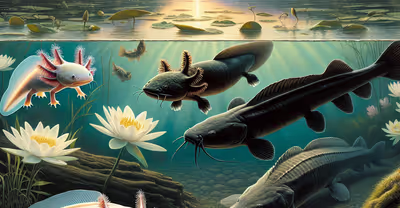
Key Takeaways
- Rare and endangered species find critical sanctuary in lake habitats.
- Protection efforts are crucial for the survival of aquatic biodiversity.
- Management and conservation measures contribute to species sustainability.
Ever wondered which rare creatures lurk beneath the rippling surfaces of our lakes?
Imagine the silent ballet of an endangered fish as it navigates the liquid expanse of its natural habitat—each graceful movement a reminder of nature's delicate balance.
Our lakes are teeming with life, havens for species that, without protection, might vanish forever.
These aquatic ecosystems offer refuge to a diversity of rare and endangered species which contribute to our planet's rich biodiversity.
You're in good hands; we've compiled facts and figures, sifted through conservation statuses, and examined the efforts to sustain these mystical residents of the deep.
Trust us to steer you through the hidden world of lake habitats, where each species tells a tale of survival and the critical importance of environmental preservation.
Devils Hole Pupfish (Cyprinodon diabolis)
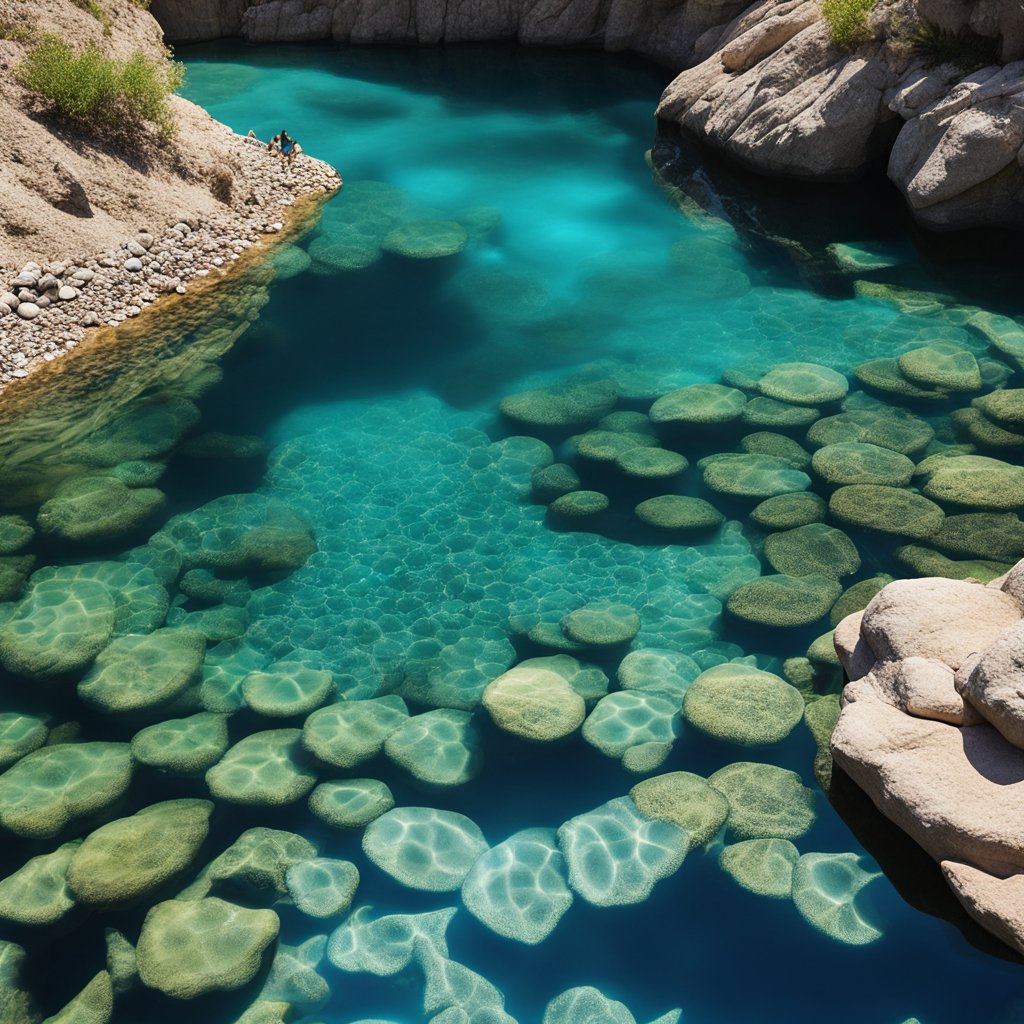
Ever wondered what it's like to be a rare celebrity in the aquatic world?
Meet the Devils Hole pupfish, the tiny superstars of their own watery enclave in Nevada.
Residing in Devils Hole, a cavern filled with the waters of an ancient aquifer, these little swimmers have quite the tale to tell.
Believe it or not, Cyprinodon diabolis is considered one of the world's rarest fish.
You might find it mind-boggling that their entire population can sometimes be limited to a mere few dozen.
As of recent counts, biologists were thrilled to number them at 191—a hopeful surge from the all-time low of 35 in 2013.
These fish are critically endangered, but they aren't giving up without a fight, and neither are the conservationists rooting for them.
Their persistence is something to be admired, surviving in such specific conditions for an estimated 10,000 years.
- Habitat: Devils Hole, Nevada
- Status: Critically Endangered
- Population Estimates: Fluctuating, with recent counts around 191 individuals.
With their silvery-blue sheen and playful swimming, they add a dash of charm to the otherwise still waters of their desert cavern.
Just an inch in size, these pupfish remind us that the grandest tales of resilience often come in the smallest packages.
Keep rooting for these aquatic underdogs—they've got quite the fin to stand on!
Humpback Chub (Gila cypha)
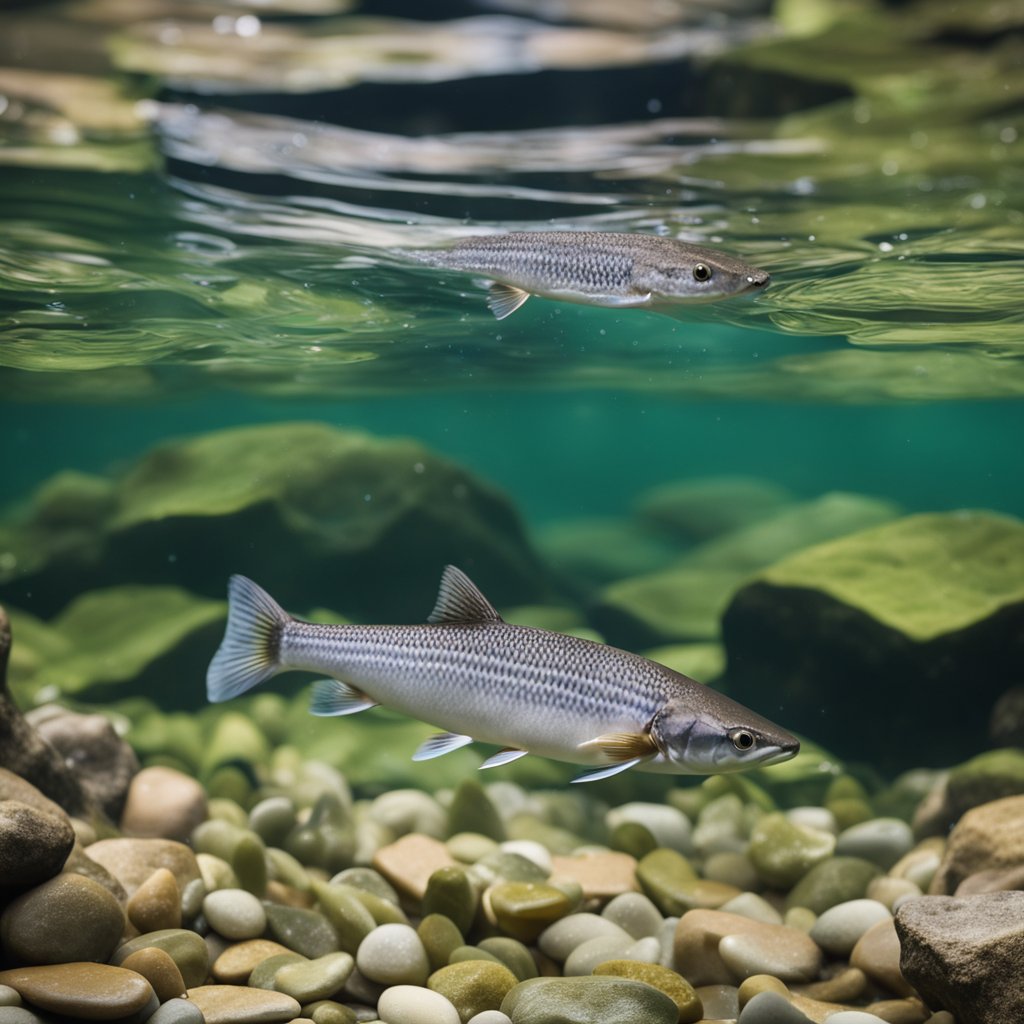
Have you ever heard of a fish with a noticeable hump on its back?
Meet the Humpback Chub, known scientifically as Gila cypha.
This unique fish is not just a sight to behold but also a species that’s faced its share of challenges.
Habitat Where can you find these intriguing fish?
They call the warm, fast-flowing waters of the Colorado River and its tributaries home.
Think of Lake Powell as one of their beloved hangouts—quite the aquatic haven.
Features What sets apart the Humpback Chub from other fish?
Its standout feature is the prominent hump behind its head.
It’s not just there for show; it helps them swim in the potent currents of their riverine homes.
They're a perfect match for the dynamic Colorado River system.
Status Unfortunately, they've been swimming in troubled waters—literally.
These fish are now classified as Threatened.
Why?
Human activities, like building dams, have altered their natural habitat quite significantly.
Do you think this resilience helps them to weather the changing tides of their environment?
Despite all odds, they continue to persist in the Colorado River basin, demonstrating that with proper protection and a little help from conservationists, they can start bouncing back.
Keep in mind the fragility of species like the Humpback Chub next time you're out enjoying nature—you could be near an important habitat for these rare creatures!
Isn’t it remarkable how life adapts and thrives, even when the currents get rough?
Lake Sturgeon (Acipenser fulvescens)
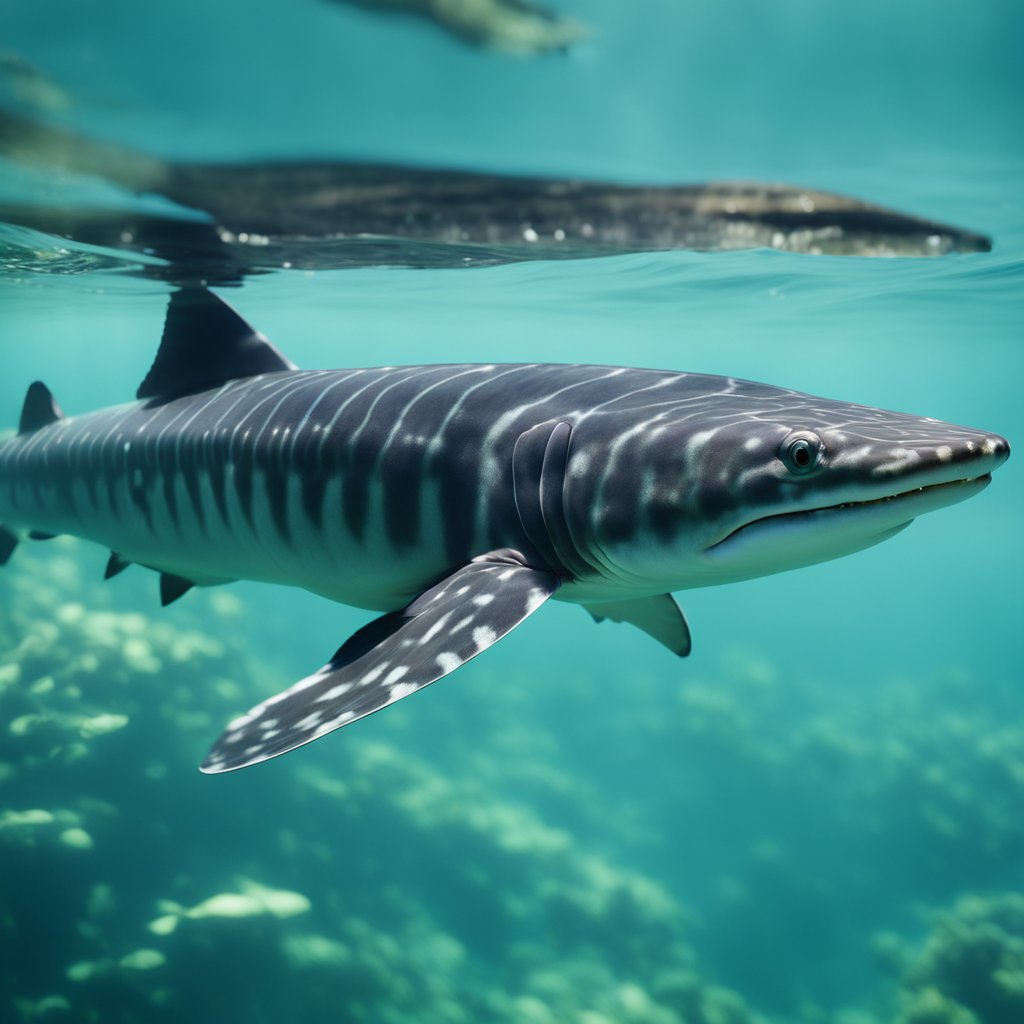
Hey there!
Ever been mesmerized by the giants of the freshwater world?
Well, let me introduce you to the Lake Sturgeon, often measuring a cool 4-6 feet and tipping the scales at a hefty 30-80 pounds!
These gentle giants have been around for ages—seriously, some can live between 50-100 years.
Can you guess their favorite hangout?
Yep, it's the Great Lakes and the vast Mississippi River Basin.
But despite their tough, bony exterior, Lake Sturgeons are in a bit of a pickle.
They've landed themselves on the threatened species list in many places.
Why, you ask?
Well, humans have been a tad overzealous with fishing, and we haven't been the best at taking care of their habitats.
Remarkable Features of Lake Sturgeon:
- Lifespan: Live to be 50-100 years old.
- Size: Typically 4-6 feet in length, weigh 30-80 pounds.
- Appearance: They've got this prehistoric vibe going with a shark-like tail and an armor of bony plates.
- Diet: Bottom feeders, munching on goodies from the riverbed.
They might not win any beauty contests with their elongated snoots and lack of pearly whites, but there’s something endearing about these underwater ancients.
For many years, these fish thrived, but not so much nowadays due to overfishing and polluted waters.
Talk about tough times in the water world!
Did you know that despite their name, Lake Sturgeons aren't just fans of lakes?
Quiet waters of rivers also make the perfect home for these fish.
Now, the good news?
Efforts are underway to give these sturgeon a fighting chance, including restocking programs in some rivers and lakes.
So, next time you're by a big, serene body of water, keep an eye out for the mighty Lake Sturgeon, slowly plowing through the water, just as it's done for hundreds of years.
Shortnose Sturgeon (Acipenser brevirostrum)
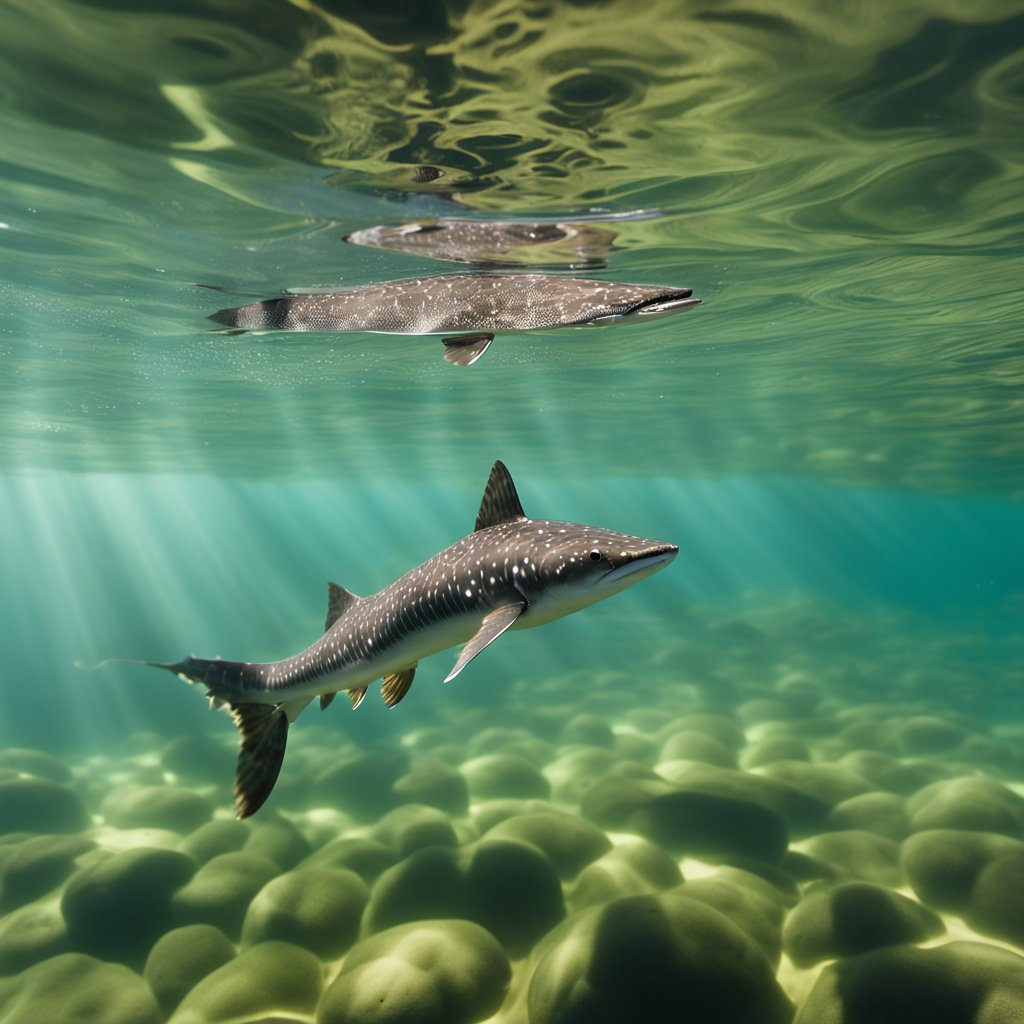
Hey there, have you ever heard of the Shortnose Sturgeon?
These ancient fish have been swimming around since the dinosaurs!
Yep, over 70 million years ago.
Pretty awe-inspiring, right?
They're one of North America’s rare gems and they're even smaller than their sturgeon cousins!
Now, if you’re thinking about where you might spot one, picture the Atlantic coast.
Their habitat stretches from rivers to estuaries, and yes, some of them even call lakes their home.
But here's the thing, they're holding on by a thread – they're endangered.
- Habitat: Estuaries and rivers along the Atlantic, including lake systems.
- Status: Endangered.
What's troubling these guys?
Well, like many rare species, they're up against habitat loss and pollution.
Imagine trying to dodge all that just to survive!
Did you know when sturgeons feel that spring in the water – when the temperature hits about 44.6–50°F– it signals them it's time to spawn?
And females, they don't go halfway.
They lay anywhere from 27,000 to 208,000 eggs!
But even with that many, their sticky eggs need clean places to attach, and well, pollution is like the worst roommate when it comes to cleanliness.
Here's a quick fun fact: the Shortnose Sturgeon is under NOAA Fisheries jurisdiction.
They've been looking out for them since 1974.
Kinda cool to have a government body looking out for you, eh?
I bet you're catching on that every fish counts here.
Let's keep our waterways clean and give these small sturgeon a fighting chance to keep growing for another 70 million years!
Kokanee Salmon (Oncorhynchus nerka)

Hey there, have you ever heard of the charming Kokanee Salmon?
These shimmering swimmers are a sight to behold and pack a whole lot of intrigue in their life journey.
Imagine a salmon that's ditched the whole sea-trekking business for a chill life in freshwater.
That's your Kokanee.
They are the inland cousins of the more adventurous sockeye salmon, living exclusively in the freshwater lakes of the Pacific Northwest.
They're like hometown heroes, staying put their whole lives in the clear, crisp waters they were born in.
What makes these salmon truly special?
Here's a quick rundown:
- Habitat: They’ve set up shop in the picturesque, nutrient-rich lakes of the Pacific Northwest.
- Status: It’s a mixed bag here. Unfortunately, some Kokanee populations are on the struggle bus, facing the 'threatened' or 'endangered' tags due to some humans playing fast and loose with their habitats and the intro of competitive species.
- Features: They've opted for a landlocked lifestyle and generally have a four to five-year canter around the clock of life. They also have a grand finale - a one-time spree of spawning before they bid adieu!
But life isn't all easy swimming.
These little redfish are finding it tougher to thrive as their home turfs are morphing—thanks to us and our knack for changing landscapes.
Considering that an awe-inspiring process like spawning marks the end of their cycle, don't you think these little guys deserve our attention and care?
With their survival on the line, it's like they're starring in their own underdog story.
Let's cheer them on and protect their lake havens, shall we?
After all, isn't the world a better place with these glittering locals gracing our waters?
June Sucker (Chasmistes liorus)
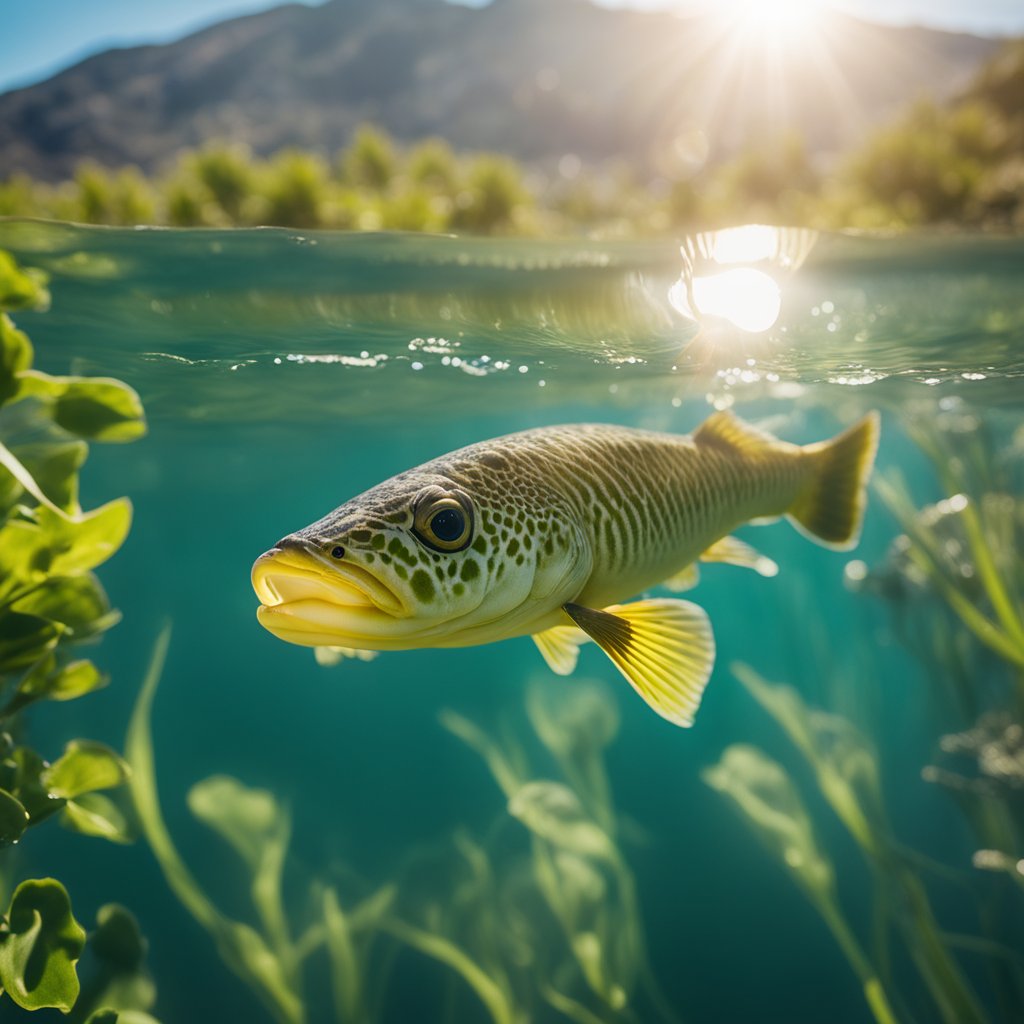
Have you ever heard of the June Sucker?
It's a unique species of fish that calls the fresh waters of Utah Lake and the Provo River home.
I'll let you in on this little secret – they're not just any fish, they are a pretty big deal in Utah!
Habitat: Utah Lake, Utah
Status: Previously Endangered, now Threatened
Appearance:
Grows up to about 24 inches.
Exhibits a gray or brownish color with a paler belly.
Imagine a fish that’s part of the secret underwaters of Utah and is exclusive to the region—that's our friend, the June sucker!
This fish is endemic, meaning it's found nowhere else in the world.
Isn't that fascinating?
Picture it alongside the Utah sucker, but don't get them mixed up – the June sucker is the one that's had a tough time due to human activities and pesky invasive species.
Threats they face:
- Habitat alteration
- Water diversion
- Invasive species
Did you know that this fish is named after its spawning month?
Yes, you guessed it – June!
It's been swimming against the current of endangerment for a while.
Thanks to some awesome conservation efforts, they've moved from being categorized as Endangered to Threatened.
It's a little win for these guys, and a big cheer from us, right?
Remember the date, June 14, 1983?
That was when their status first got the endangered tag.
Fast forward to recent times, and the June sucker's story is slowly changing.
Teamwork's making the dream work, as state, local, and Federal partners are teaming up to ensure these unique fish stick around for many more Junes to come.
Let’s keep an eye out for these swimming survivors on our next Utah Lake adventure, shall we?
Boulder Darter (Etheostoma wapiti)

Have you ever heard of a living jewel in freshwater lakes?
Meet the Boulder Darter, scientifically known as Etheostoma wapiti.
This small but mighty fish is fighting for survival in the clear streams of the Elk River and Shoal Creek, nestled in the beautiful landscapes of Tennessee and Alabama.
Habitat Get ready to get your feet wet!
The Boulder Darter thrives in:
- Clean, fast-flowing streams and rivers
- Aquatic environments that include the unique lake habitats connected to their river systems
Why so special?
You might be wondering what makes this fish stand out.
Well, their vivacious presence in a river tells us a lot about water quality because they need pristine conditions to flourish.
Isn't it amazing how nature has its own quality control specialists?
Risks they face
- Habitat loss: Their homes are being altered and sometimes destroyed.
- Pollution: These natural water filters are sensitive to any contaminants in their environment.
Status Check It's a tough world for these darters – they're currently listed as endangered, which means we've got to step up to protect them.
Do you fancy yourself as a conservation champion?
Remember that every effort to reduce water pollution and preserve natural habitats contributes to the survival of these sparkly swimmers.
Who knew that looking after a small fish could be a big step for biodiversity?
Pahrump Poolfish (Empetrichthys latos)
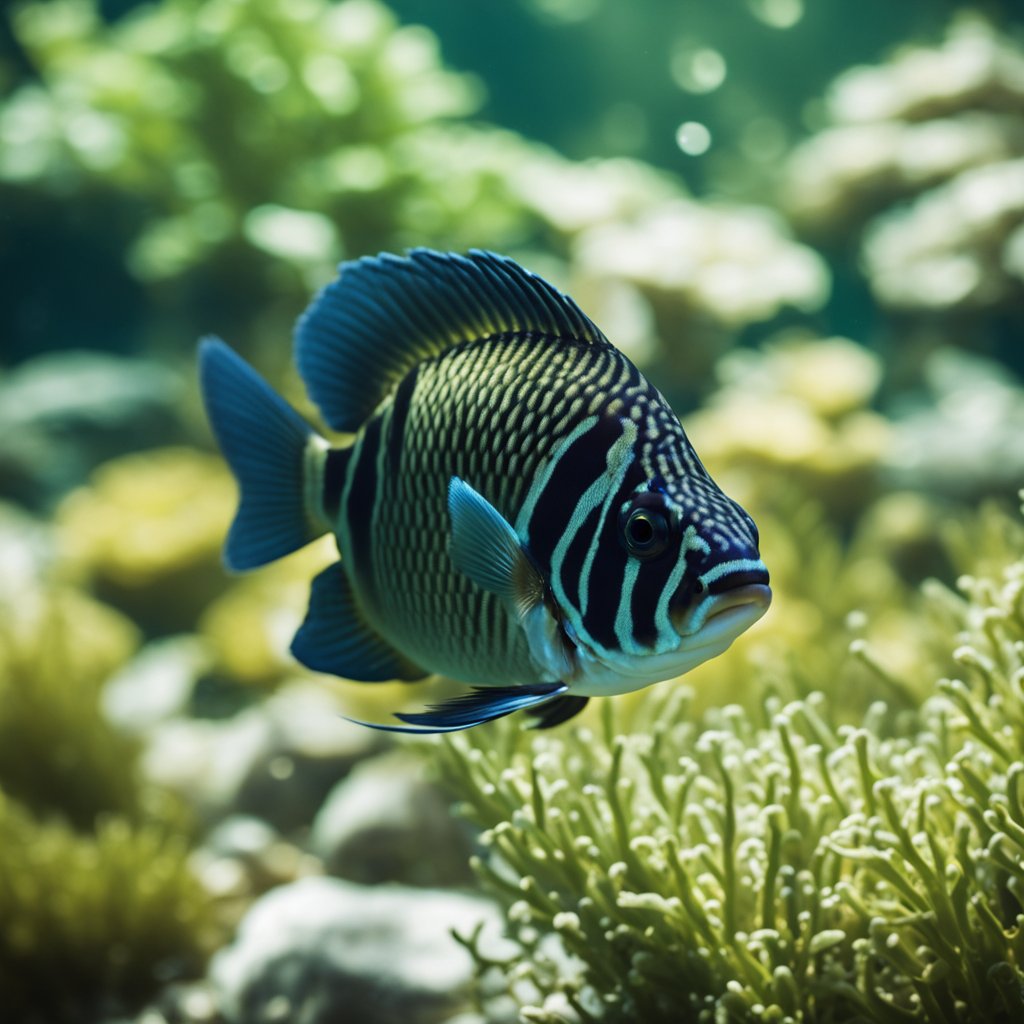
Ever wondered about a desert fish that's mastered the art of survival in Nevada?
Let's talk about the Pahrump Poolfish, or Empetrichthys latos.
Isn't it amazing to think that this little champion once thrived in just a single spring in the Pahrump Valley?
Here's the scoop:
- Habitat: Now, they cling to existence in man-made refuges because their natural spring was destroyed.
- Status: They are on the endangered list. A bit of a tight spot, right?
- Features: With no pelvic fins, a broad mouth, and a slender greenish back, they're quite the unique fish!
Did you know these guys had it rough?
Only a fraction of the population remains compared to a robust 10,000 back in 2015.
Imagine, their numbers dipped below 1,000 — quite the alarm bell for conservationists!
Now, these guys are not your usual fish.
They don't get to swim in vast oceans or rivers.
They're desert dwellers that have adapted to incredibly unique conditions.
But with their home at stake, it's a race against time to ensure they don't vanish off the face of the earth.
Quick Facts:
- Family: Goodeidae, also known as splitfins.
- Common Names: Preferring 'Pahrump Poolfish,' they're also called 'Pahrump Killifish.'
So, what can you do?
Stay informed, support conservation efforts, and maybe even spread the word about the plight of the Pahrump Poolfish.
Remember, every species plays a part in the puzzle we call Earth, and it's our job to ensure they all fit snugly for generations to come.
Ozark Cavefish (Amblyopsis rosae)
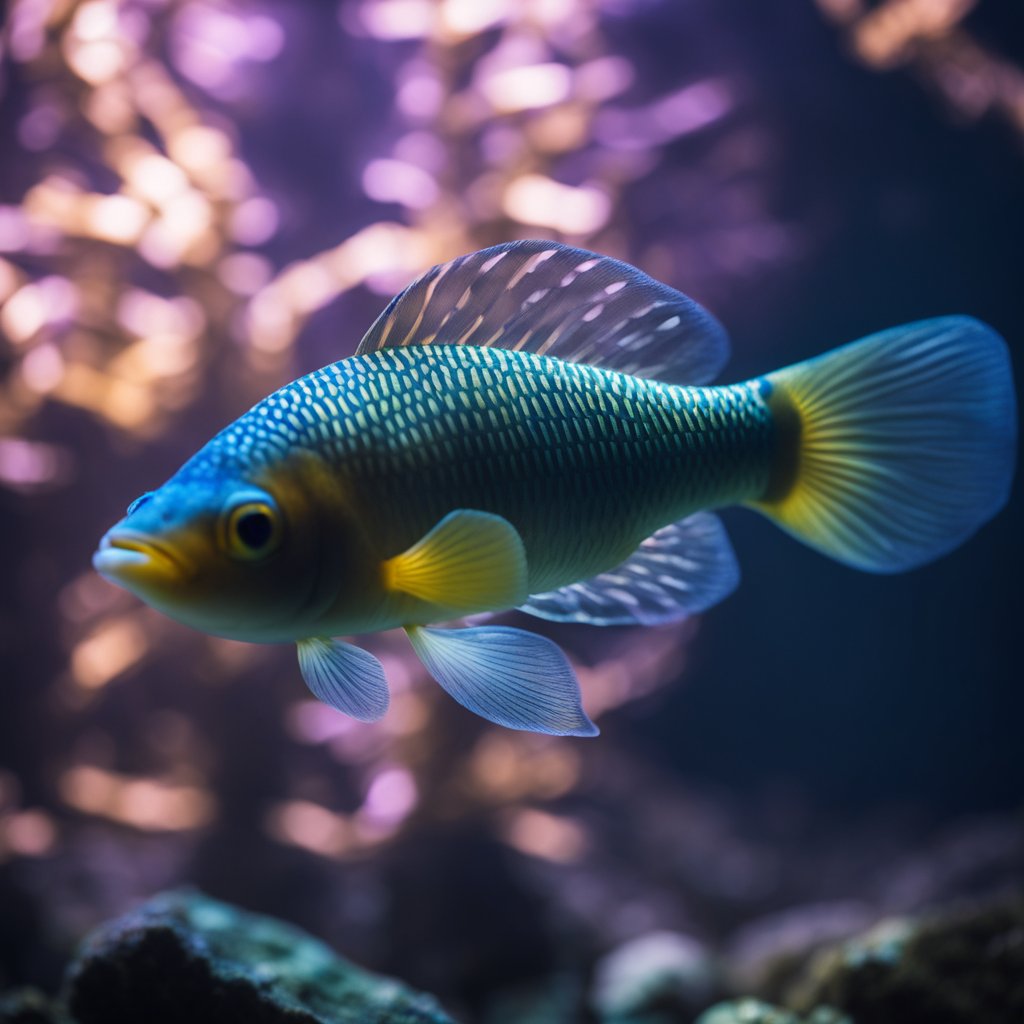
Have you ever heard of a fish that can’t see?
Meet the Ozark Cavefish, a tiny pale swimmer making its home in the quiet darkness of caves and underground streams within the Ozark Plateau.
Imagine navigating life without any light, and you've got a day in the life of Amblyopsis rosae.
Habitat These remarkable creatures live where sunlight never reaches.
They're found in subterranean environments connected to some lake habitats—a world so different from our sunny skies it might as well be another planet!
Status Currently, the Ozark Cavefish is on the threatened species list.
Since 1984, their population has faced risks that could send them into the darkness of extinction, not just their caves.
Features Their eyes?
Non-existent!
Who needs to see when there's no light?
This fish's lack of vision is reflected in its appearance; they are blind and sports a pinkish hue.
Their body is a palette of pale tones—since color doesn't really matter in the pitch black, right?
- Adaptations: They've traded sight for a more refined sense of smell and a nervous system tuned to the faintest vibrations. Cool, huh?
- Threats: The pristine water these fish rely on is under threat from activities like farming, mining, and urban development. Crystal clear water is as vital to them as air is to us!
So there you have it, your own snippet on the Ozark Cavefish.
Isn't it fascinating how life adapts?
Next time you're considering that new aquarium, perhaps give a thought to the unseen struggles of these incredible fish and the importance of protecting their hidden underwater realms.
Salmon-crested Cockatoo (Cacatua moluccensis)
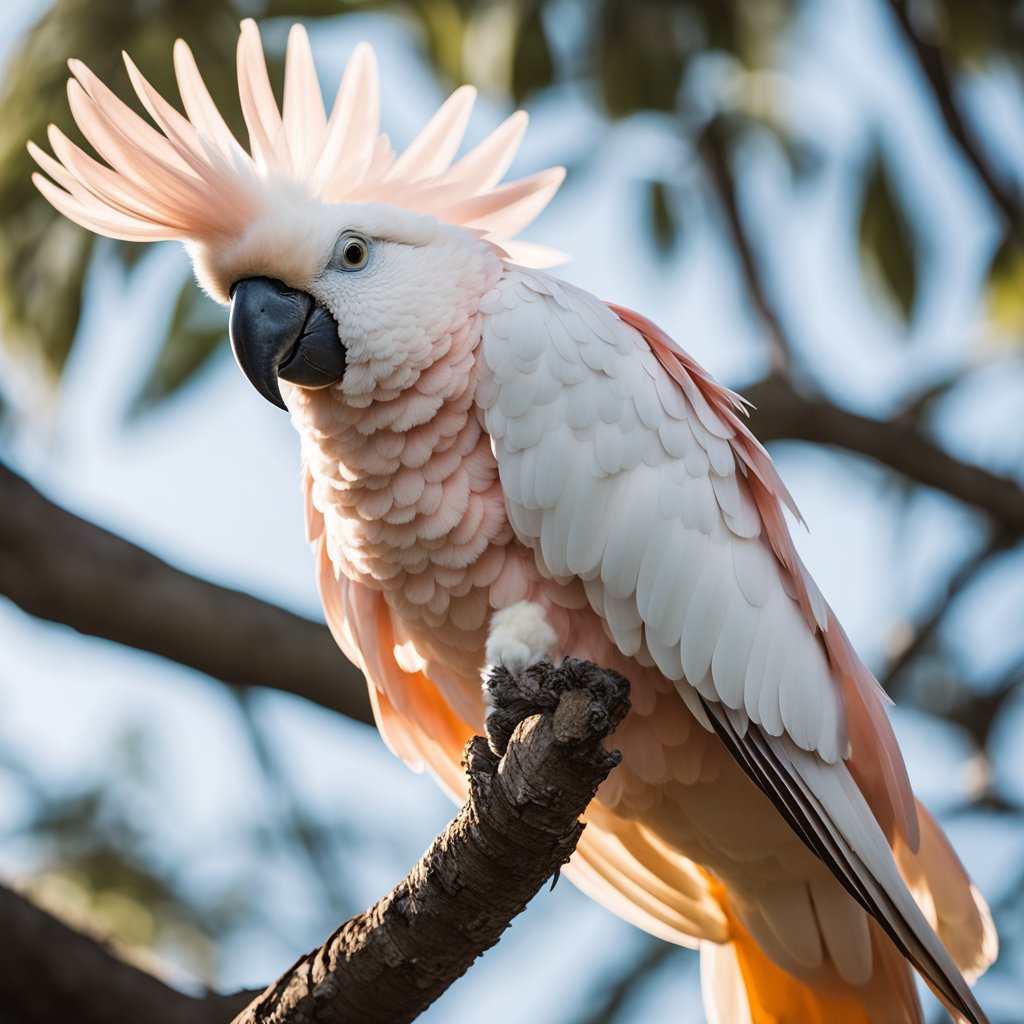
Have you ever caught a glimpse of the Salmon-crested Cockatoo?
If you're lucky, you might just spot them using the lakes of Indonesia as their playground!
This spectacular bird calls the lake-rich forests of the Seram archipelago in eastern Indonesia home.
But did you know their future is a bit shaky?
- Status: Vulnerable
- Habitat: Not just around lakes, but definitely dependent on them
Bold colors for a bold personality: With feathers washed in a delicate salmon-pink and a backward-curving pink crest, it's hard to miss the Salmon-crested Cockatoo.
Oh, and don't forget the dramatic yellow-orange under their wings and tail when they take flight!
- Dimensions: They range from 46 to 52 centimeters in height
- Weight: These birds tip the scales up to 850 grams
Imagine the laughter and chatter that erupts from their flocks.
It’s not all fun and games though—their lake habitats are under threat from activities like logging and land conversion.
Without these habitats, where will our feathered friends take refuge?
So, while you're out there appreciating nature, remember our pink-crested pals.
They sure make our world a whole lot brighter, don't you think?
Keep an eye out, and maybe you’ll share a lakeside moment with the stunning Salmon-crested Cockatoo!


